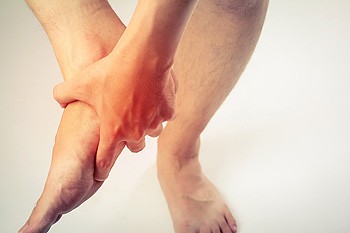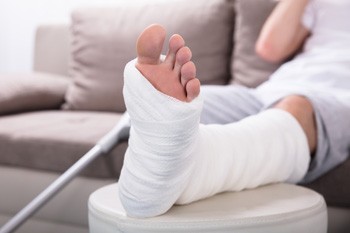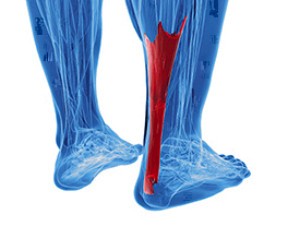 The most common forms of foot pain consists of plantar fasciitis, ankle sprains, and Achilles tendon injuries. Depending on the severity of these injuries, performing frequent stretches and foot exercises may help the patient to find mild relief. Some of the benefits can include loosening tendons and muscles that have become tight, which can be helpful in achieving pain relief. An effective stretch for the plantar fascia includes sitting on a chair after placing a towel on the floor in front of you. This is followed by picking up the towel with your toes, until a stretch on the bottom of the foot is felt. Many patients like to perform a similar stretch by rolling the sole of their foot on a tennis ball. If you are experiencing any type of foot pain, it is strongly suggested that you are under the care of a podiatrist who can effectively treat foot ailments.
The most common forms of foot pain consists of plantar fasciitis, ankle sprains, and Achilles tendon injuries. Depending on the severity of these injuries, performing frequent stretches and foot exercises may help the patient to find mild relief. Some of the benefits can include loosening tendons and muscles that have become tight, which can be helpful in achieving pain relief. An effective stretch for the plantar fascia includes sitting on a chair after placing a towel on the floor in front of you. This is followed by picking up the towel with your toes, until a stretch on the bottom of the foot is felt. Many patients like to perform a similar stretch by rolling the sole of their foot on a tennis ball. If you are experiencing any type of foot pain, it is strongly suggested that you are under the care of a podiatrist who can effectively treat foot ailments.
Foot Pain
Foot pain can be extremely painful and debilitating. If you have a foot pain, consult with one of our podiatrists from Biebel & DeCotiis Podiatry Associates. Our doctors will assess your condition and provide you with quality foot and ankle treatment.
Causes
Foot pain is a very broad condition that could be caused by one or more ailments. The most common include:
- Bunions
- Hammertoes
- Plantar Fasciitis
- Bone Spurs
- Corns
- Tarsal Tunnel Syndrome
- Ingrown Toenails
- Arthritis (such as Gout, Rheumatoid, and Osteoarthritis)
- Flat Feet
- Injury (from stress fractures, broken toe, foot, ankle, Achilles tendon ruptures, and sprains)
- And more
Diagnosis
To figure out the cause of foot pain, podiatrists utilize several different methods. This can range from simple visual inspections and sensation tests to X-rays and MRI scans. Prior medical history, family medical history, and any recent physical traumatic events will all be taken into consideration for a proper diagnosis.
Treatment
Treatment depends upon the cause of the foot pain. Whether it is resting, staying off the foot, or having surgery; podiatrists have a number of treatment options available for foot pain.
If you have any questions, please feel free to contact one of our offices located in Holmdel and Middletown, NJ . We offer the newest diagnostic and treatment technologies for all your foot care needs.









